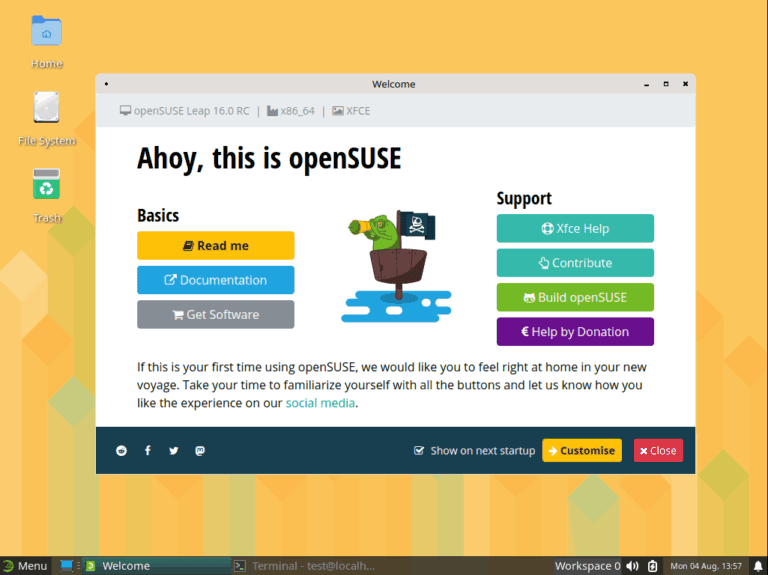openSUSE Leap 16.0 has made the transition from Beta to Release Candidate with Build 148.4. The Linux distribution is now very close to its final version.
A notable new feature in openSUSE Leap 16.0 is the availability of Xfce on Wayland as an experimental preview. Thanks to intensive collaboration, openSUSE is one of the first distributions to offer this combination. Implementation remains challenging, as Wayland support in Xfce is still experimental, with several known issues.
Users can try greetd and gtkgreet as replacements for LightDM, two tools that are better suited to the Wayland environment. For installation, Leap 16.0 uses the latest Agama installer, suitable for both online and offline installations.
Repository structure and 32-bit support change
A fundamental change concerns the repository structure. Leap 16.0 mainly uses a single repository (repo-oss) that contains both community and SLES packages, including updates. The separate update repositories that users are familiar with from version 15.6 are no longer available. The system also introduces separate repodata per architecture and parallel downloads in Zypper for faster performance.
SUSE Linux Enterprise 16.0 no longer supports 32-bit binary execution, which has implications for software compatibility. Leap users can work around this by installing grub2-compat-ia32, which enables 32-bit emulation via the kernel parameter ia32_emulation=1. This change has resulted in Steam being removed from the Non-OSS repository due to limited 32-bit libraries.
YaST makes way for alternatives
A notable decision is the complete removal of YaST packages from new installations. As a replacement, openSUSE is introducing the Myrlyn package, which takes over the functionality of legacy YaST Software Management. A limited number of YaST packages will remain available for the time being due to dependencies with Agama, but the long-term goal is to move to Cockpit.
The transition from the legacy OBS SCM to Git for both Tumbleweed and Leap 16.0 is currently the biggest challenge for the Release Team. This requires a completely new maintenance model for Leap.
SELinux is enabled by default on new installations. Users who prefer to use AppArmor can switch manually after installation. This is due to the focus on beauty in the latest version.
Migration and planning
For users switching from Leap 15.6, openSUSE recommends the new opensuse-migration-tool. This tool provides scripts for tasks such as enabling 32-bit binary support, migrating from PulseAudio to PipeWire, and choosing between AppArmor and SELinux.
The final release depends on SUSE Linux Enterprise 16.0, which is scheduled to announce its Gold Master at the end of September. If everything goes according to plan, Leap 16.0 could be released in October, shortly before the commercial SLES version.
